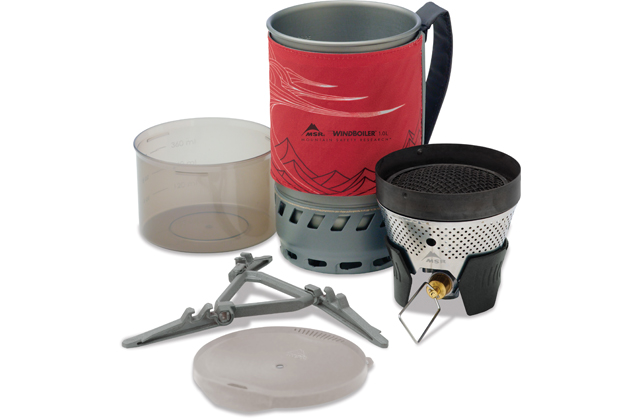Nobody knows stoves better than TGO’s Gear Editor Chris Townsend. Here’s his lowdown on the latest models. On test MSR Windboiler stove
MSR’s Reactor stoves with enclosed radiant burners and heat exchanger pots have been around for several years now and are proven as powerful stoves for extreme conditions. They’re especially good for snow melting. With the Windboiler MSR has used the same technology to produce a more general purpose stove. The burner isn’t as wide as the Reactor’s and the output is less (7,000 BTU rather than 9,000 BTU). This doesn’t make much difference when boiling small amounts of water but it does mean that simmering is a bit easier with the Windboiler – the main problem being that as you can’t see the glowing burner it’s easy to turn the stove off rather than down.
The narrower burner also means a narrower, taller pot. This hard-anodised aluminium pot is litre-size but I suggest not putting more than 700ml in to avoid the contents boiling over. There are volume marks on the inside. The rest of the design is excellent, one of the best I’ve come across in this type of stove. There’s a pot cosy firmly attached to the pot that doesn’t slip and a semi-rigid fabric handle that gives a firm grip. The transparent lid fits well and has strainer and drinking holes. There’s a protective cover for the heat exchanger that doubles as a 470ml bowl or mug. The burner fits inside the pot (you can also get a 100 size cartridge inside) to make a fairly compact unit. A cartridge stabiliser is provided which makes the tall narrow unit a little more stable. Care is still needed to ensure it doesn’t topple over though.
The big advantage of the Windboiler gives it its name. It really does work well in the wind without need of a separate windshield as the burner is covered by the heat exchanger. Lighting the burner can be difficult in strong winds though as this can’t be done with the pot in place and there isn’t a piezo igniter. Briefly shielding the burner with something may be necessary. I’ve found a fire steel the easiest lighter to use in the wind. The wind resistance makes this an excellent stove for brew-ups during the day and for use with shelters where there’s no room to cook safely under cover.
In still air the burn time and fuel consumption are nothing special but as soon as a breeze picks up the difference with other stoves, even if a separate windshield is used, is significant.
I’d prefer a wider pot for cooking (you need to keep stirring to prevent food sticking – a long handled spoon is recommended) but otherwise this is an excellent well-designed unit.
Reviewed in June 2015 Issue







